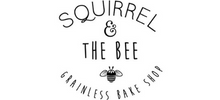Why the Right Pan Makes All the Difference in Gluten-Free Cooking
When it comes to gluten-free cooking, the right cookware can be a game changer. Using the proper pan not only improves the texture and taste of your dishes but also helps prevent cross-contamination — a crucial factor for anyone with celiac disease or gluten sensitivity. In this blog, categorized under Pan, we’ll explore why selecting the right pan matters so much in gluten-free kitchens and how to pick the best pans for your needs.
The Importance of Choosing the Right Pan for Gluten-Free Cooking
Cooking gluten-free requires more attention to detail than many realize. Gluten can linger in scratches and crevices on cookware, risking cross-contamination. Moreover, gluten-free batters and doughs often behave differently from their wheat-based counterparts, needing pans that support even heat distribution and non-stick properties to prevent sticking and burning.
Using dedicated or carefully selected pans designed or chosen with gluten-free cooking in mind ensures that your meals are safe, delicious, and easy to prepare. This attention to cookware quality and type can transform your gluten-free cooking experience.
Types of Pans Best Suited for Gluten-Free Cooking
Stainless Steel Pans: Durable and Safe
Stainless steel pans are widely recommended for gluten-free cooking because they are non-porous and easy to clean thoroughly, which helps prevent gluten residue buildup. They don’t absorb flavors or gluten particles and can be shared between gluten and gluten-free foods if cleaned well. Investing in a high-quality stainless steel pan ensures durability and longevity, making it a smart choice for your pan category kitchen tools.
Non-Stick Pans: Convenient But Require Care
Non-stick pans are popular for cooking gluten-free pancakes, tortillas, or anything that tends to stick. However, they require special attention to avoid scratches since damaged non-stick surfaces can harbor gluten particles and affect food safety. Consider using a dedicated non-stick pan for gluten-free cooking only, and replace pans once the coating starts to peel or chip.
Cast Iron: A Dedicated Pan for the Gluten-Free Cook
Cast iron pans are excellent for many recipes, offering superb heat retention and distribution. However, they can absorb gluten residue if not properly cleaned and seasoned. Experts recommend having a designated cast iron pan solely for gluten-free cooking to avoid cross-contamination.
Specialty Bakeware for Gluten-Free Baking
Gluten-free baked goods often need extra support during baking because the lack of gluten affects structure. Pans with higher sides, such as specialized loaf pans (like the King Arthur Perfect Gluten-Free Loaf Pan), help achieve beautifully shaped breads and even baking results. These pans are usually made from steel and aluminum blends with non-stick coatings suitable for gluten-free recipes.
How to Maintain Your Pans for Safe Gluten-Free Cooking
- Clean Thoroughly: Always scrub pans well to remove any residue, paying attention to seams or scratches where gluten can hide.
- Use Separate Tools: If possible, designate pans, utensils, and cutting boards specifically for gluten-free use to minimize cross-contact risk.
- Replace Damaged Cookware: Non-stick coatings that are peeling or scratched should be discarded as they can trap gluten particles.
- Utilize Parchment Paper: For baking, lining pans with parchment paper can prevent sticking and simplify cleanup.
- Consider the Material: Lightweight and seamless stainless steel pans are preferred for easy cleaning and less chance of gluten harboring spots.
Top Tips for Cooking Gluten-Free With the Right Pan
- Choose Your Pan Based on the Recipe: Use non-stick for delicate pancakes, stainless steel for sautéing or frying, and cast iron for searing meats or veggies.
- Preheat Properly: Proper preheating helps even cooking and reduces sticking, especially important for gluten-free batters and doughs that can be more fragile.
- Use Quality Bakeware: Specialty gluten-free loaf pans with high sides ensure proper rise and shape, improving the aesthetic and texture of your baked goods.
- Keep Separate Cookware: To prevent gluten exposure, keep designated gluten-free pans in your kitchen.
Conclusion: Elevate Your Gluten-Free Cooking With the Right Pan
Mastering gluten-free cooking is as much about choosing the right cookware as it is about using quality ingredients. The type of pan you use affects the safety, texture, and taste of your dishes. Investing in durable stainless steel or dedicated non-stick and cast iron pans can make your gluten-free culinary adventures easier and more enjoyable.
Whether you’re baking bread, frying pancakes, or sautéing vegetables, the right pan ensures your gluten-free meals come out perfect every time. Start building your collection of dedicated gluten-free pans today and discover the difference a well-chosen pan can make in your kitchen.
Ready to upgrade your gluten-free cooking? Explore our recommended pans and transform your cooking experience!
